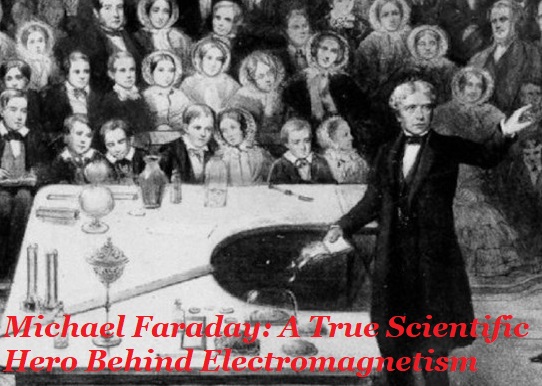科学と神学との闘争(戦い)は(これまで)独特なものであった。いつも,また,どこにおいても -18世紀末のフランスやロシアを除き- 科学者の大部分はそれぞれぞれの時代の(=当時の)正統信仰(orthodoxy 正説)を支持していた。その中(=正統信仰支持者の中)には著名な人もいた。ニュートンはアリウス主義者(Arian:神の唯一絶対性を強調し,イエス・キリストを神によって無からつくられた被造物であると考える。)であったが,(キリストの位置づけ以外の)その他の全ての点で,キリスト教信仰の支持者であった。キュヴィエ(Frederic Dagobert Cuvier, 1769-1832:フランスの動物学者)は正統派のカトリック信者だった。ファラデー(Michael Faraday, 1791-1867:イギリスの化学者・物理学者)はサンデマン主義者(Sandymanian)だったが,この宗派の誤謬は彼にも科学的論証によって証明可能とは思われなかったし(注:Sandymanian についてさいたま市立中央図書館で OED や Webster で引いてみましたが出てきませんでした。sandy 砂だらけの;ギラギラした + mania マニア/熱狂 → 「砂マニア」「砂フェチ」「サンドウィッチマニア」…まさか。と,ここでファラデーの伝記を調べればわかるかもしれないとウィキペディアを調べたところ,次のような説明が書かれており,解決。即ち「ファラデーは信心深い人物で,1730年に創設されたキリスト教徒の一派であるサンデマン派(注:イエス・キリストの神性を信じて「イエスは主です」とさえ告白すれば救われると主張/キリスト教福音派では異端とされる)に属していた。伝記作者は「神と自然の強い一体感がファラデーの生涯と仕事に影響している」と記している」。つまり,Sandyman + ian と分解すべき!)。また,科学と宗教との関係に関する彼の見解は全ての聖職者(churchman)が称賛(applaud 拍手)しうるようなものであった。闘争(闘い)は,神学と「科学」との間にあったのであり,神学と科学者との間にあったのではなかった。科学者は,非難されるような見解を抱いた時にも,一般的に言って,衝突を避けようと最善を尽くした。(例えば)既に見たように,コペルニクスは自分の著書をローマ教皇に献呈した,ガリレオは前言を取消した。デカルトは,オランダに住むのが賢明だと考えたけれども,聖職者たちと良い関係を維持するよう大いに努力した。そうして,ガリレオの見解と同じ見解を共有しながら,計算づくの沈黙をすることによって非難をまぬがれた。19世紀においても,大部分のイギリスの科学者は,彼らの科学と リベラルなキリスト教徒がなお不可欠だと見倣したキリスト教の信仰箇条との間には本質的な衝突はまったくないと考えた。-なぜなら,ノアの大洪水やアダムとイブ(の楽園追放)に関してさえ,文字通りの真理を犠牲にすることは可能だと(文字通りに解釈しなくてもよいと)わかっていたからである。 今日の状況は(も),コペルニクス説が勝利を占めて以来全ての時代においてそうであった状態と余り異なっていない。連続した科学的発見は,キリスト教徒に,中世において信仰の不可欠な部分(integral parts)と見なされていた(種々の)信仰箇条(信念)を,次から次へと捨てさせていった。このように次々に信仰が後退したので(信仰箇条を捨てることが認められたために),科学者も,彼らの研究が(科学と宗教との)闘いが今日到達した論争の最前線に関するものでない限り,キリスト教徒であり続けることを可能にした(のである)。ところで,過去3世紀の間ほとんどの時代において,科学と宗教とは和解したと宣言されている。(即ち)科学者は科学の範囲を超えた領域が存在することを謙虚に認め,また,リベラルな神学者たちは科学的に証明可能なことはあえて否定しないと認めている。いまだ,この平穏を破る者が少しはいることは事実である。(即ち)一方には,キリスト原理主義者及び頑固なカトリック神学者がいる。他方には,より啓発された牧師たちの比較的控えめな要求さえ認めることを拒否する,生化学や動物心理学のような主題に関する急進的研究者たちがいる。しかし,全体的にみて,闘いは過去に比べて不活発になっている。共産主義やファッシズムの新しい信条は神学的頑迷さの継承者(相続人)である。そして,もしかすると,深い無意識の領域のどこかで,牧師や教授たち(注:宗教と科学の闘いの主役たち)は共に現状維持に関心をもっているかも知れない。
Chapter 7: Mysticism, n.1
The warfare between science and theology has been of a peculiar sort. At all times and places – except late eighteenth-century France and Soviet Russia – the majority of scientific men have supported the orthodoxy of their age. Some of the most eminent have been in the majority. Newton, though an Arian, was in all other respects a supporter of the Christian faith. Cuvier was a model of Catholic correctness. Faraday was a Sandymanian, but the errors of that sect did not seem, even to him, to be demonstrable by scientific arguments, and his views as to the relations of science and religion were such as every Churchman could applaud. The warfare was between theology and science, not the men of science. Even when the men of science held views which were condemned, they generally did their best to avoid conflict. Copernicus, as we saw, dedicated his book to the Pope ; Galileo retracted ; Descartes, though he thought it prudent to live in Holland, took great pains to remain on good terms with ecclesiastics, and by a calculated silence escaped censure for sharing Galileo’s opinions. In the nineteenth century, most British men of science still thought that there was no essential conflict between their science and those parts of the Christian faith which liberal Christians still regarded as essential – for it had been found possible to sacrifice the literal truth of the Flood, and even of Adam and Eve. The situation in the present day is not very different from what it has been at all times since the victory of Copernicanism. Successive scientific discoveries have caused Christians to abandon one after another of the beliefs which the Middle Ages regarded as integral parts of the faith, and these successive retreats have enabled men of science to remain Christians, unless their work is on that disputed frontier which the warfare has reached in our day. Now, as at most times during the last three centuries, it is proclaimed that science and religion have become reconciled : the scientists modestly admit that there are realms which lie outside science, and the liberal theologians concede that they would not venture to deny anything capable of scientific proof. There are, it is true, still a few disturbers of the peace : on the one side, fundamentalists and stubborn Catholic theologians ; on the other side, the more radical students of such subjects as biochemistry and animal psychology, who refuse to grant even the comparatively modest demands of the more enlightened Churchmen. But on the whole the fight is languid as compared with what it was. The newer creeds of Communism and Fascism are the inheritors of theological bigotry ; and perhaps, in some deep region of the unconscious, bishops and professors feel themselves jointly interested in the maintenance of the status quo.
出典:Religion and Science, 1935, chapt. 7:
情報源:https://russell-j.com/beginner/RS1935_07-010.HTM

